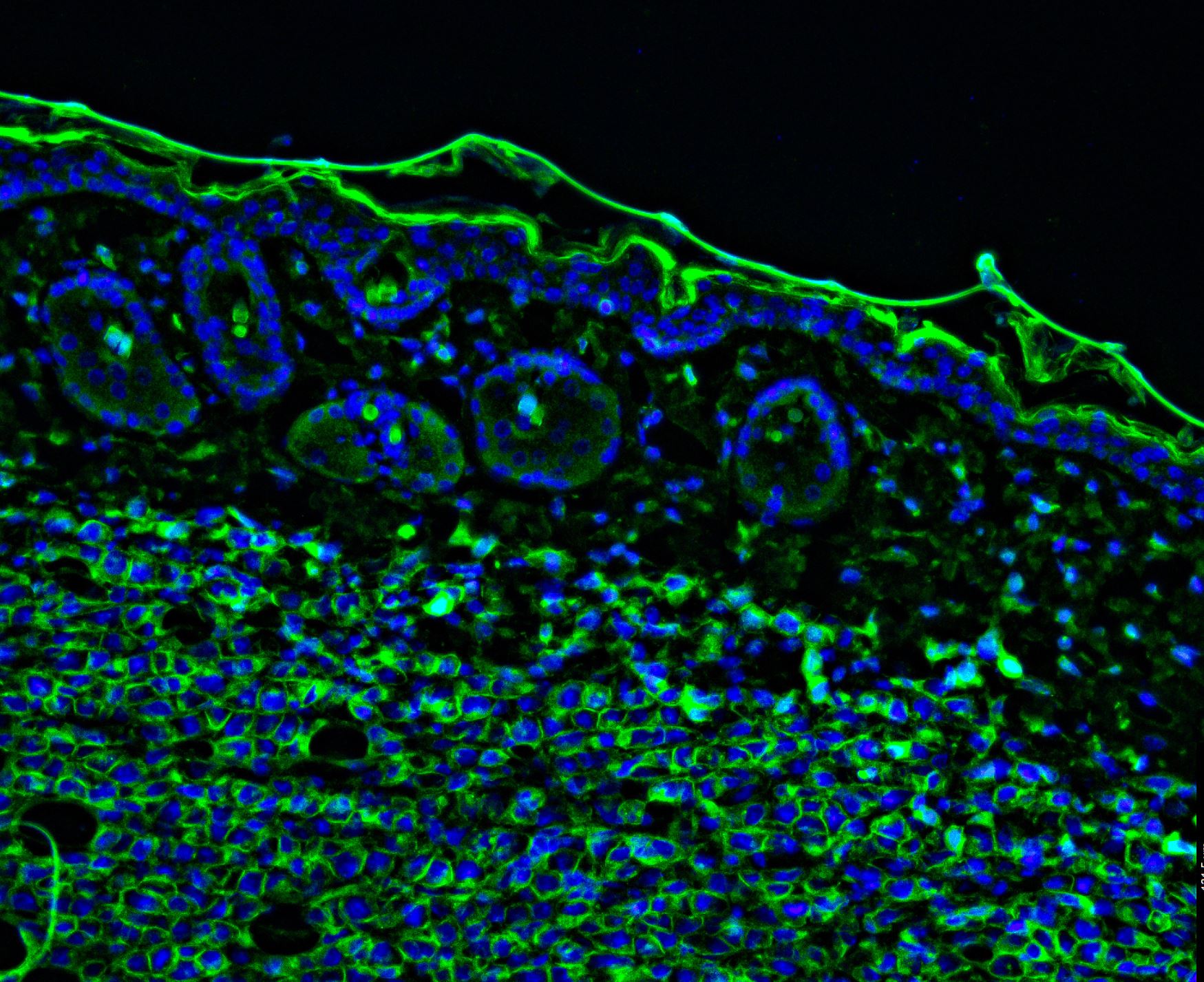 Melanoma, though not the most common type of skin cancer, is extremely dangerous if not caught early and treated, as it has the ability to rapidly spread, making diagnosis very important. Various proteins have been used over the years for diagnosis of malignant melanoma, including S100 protein, HMB-45, and Melan-A, though SOX-10 (Sry-related HMg-Box gene 10) is now widely used as it has been found to be a sensitive and specific biomarker for this type of cancer.
Melanoma, though not the most common type of skin cancer, is extremely dangerous if not caught early and treated, as it has the ability to rapidly spread, making diagnosis very important. Various proteins have been used over the years for diagnosis of malignant melanoma, including S100 protein, HMB-45, and Melan-A, though SOX-10 (Sry-related HMg-Box gene 10) is now widely used as it has been found to be a sensitive and specific biomarker for this type of cancer.
Despite SOX-10’s merits, no biomarker or IHC stain is perfect, which has led some labs to consider the use of the PRAME (preferentially expressed antigen in melanoma) antibody as an additional method of detection, particularly in scenarios where there is not a consensus using SOX-10. PRAME has low to no expression in regular tissue (except for a few such as testis and ovaries) but high expression in malignant cells, particularly in primary and metastatic melanomas, making it a valuable marker for melanoma diagnosis, though it has also been used in other types of cancer diagnosis including leukemia, lymphoma, breast cancer, and some squamous cell carcinomas.
One of the benefits of PRAME is its use as a prognostic biomarker for metastatic risk. As previously mentioned, melanoma has the deadly ability to spread, so recognizing metastatic potential in a tumor is life-saving. High levels of expression of PRAME have been correlated with increased risk of metastasis in class 1 uveal melanoma, according to a study published in Clinical Cancer Research, conducted by the Eye Cancer Site Disease Group at Sylvester Comprehensive Cancer Center at the University of Miami Miller School of Medicine.
PRAME is available from a variety of antibody vendors, including now in a pre-dilute (ready to use) form to make validation slightly easier. The obstacle however for many labs who have investigated optimizing/validating PRAME for their labs but decided against it, remains cost. It would not be fully replacing any of the other markers used, and with relatively good results from other tests, they have not found PRAME a necessity for their labs. That being said, there are many derm labs who do do PRAME in house and have been happy with the results. If you have been successfully using PRAME and would be interested in sharing your lab’s experience as a follow up post, feel free to reach out (histo@nsh.org)!
References:
1.https://pubmed.ncbi.nlm.nih.gov/6112296/#:~:text=S100%20protein%20is%20a%20nervous,complement%20fixation%20and%20immunofluorescence%20tests.
2. https://pubmed.ncbi.nlm.nih.gov/25356946/
3. https://ashpublications.org/blood/article/114/15/3299/125016/The-preferentially-expressed-antigen-in-melanoma
4.https://pubmed.ncbi.nlm.nih.gov/30045064/#:~:text=PRAME%20(PReferentially%20expressed%20Antigen%20in,protein%20expression%20in%20melanocytic%20tumors.
5. https://www.sigmaaldrich.com/catalog/product/sigma/hpa045153?lang=en®ion=US
6. https://www.ncbi.nlm.nih.gov/pmc/articles/PMC6631376/
7. https://www.ncbi.nlm.nih.gov/pmc/articles/PMC4780366/
#2021#Blog#IHCandMolecular